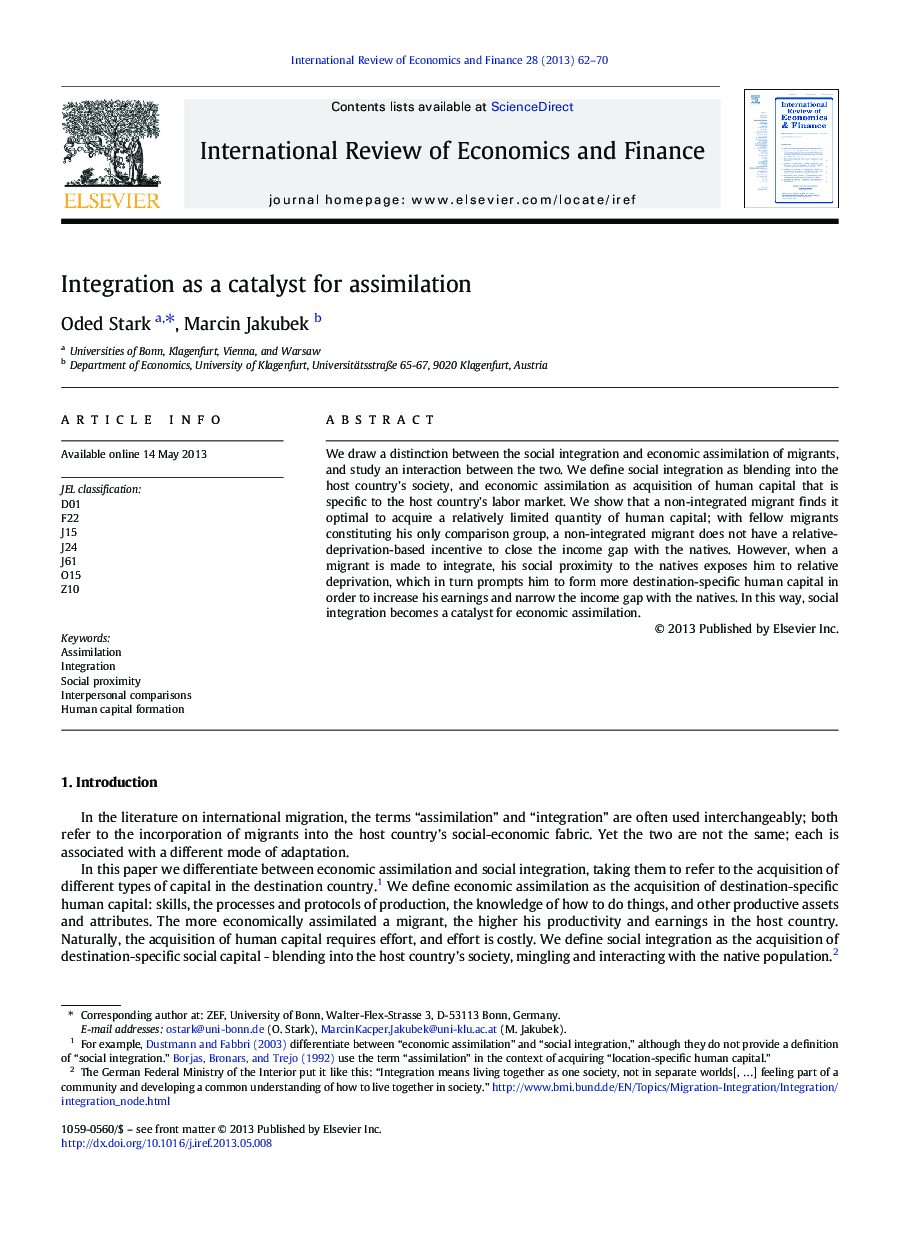| Article ID | Journal | Published Year | Pages | File Type |
|---|---|---|---|---|
| 5083795 | International Review of Economics & Finance | 2013 | 9 Pages |
Abstract
We draw a distinction between the social integration and economic assimilation of migrants, and study an interaction between the two. We define social integration as blending into the host country's society, and economic assimilation as acquisition of human capital that is specific to the host country's labor market. We show that a non-integrated migrant finds it optimal to acquire a relatively limited quantity of human capital; with fellow migrants constituting his only comparison group, a non-integrated migrant does not have a relative-deprivation-based incentive to close the income gap with the natives. However, when a migrant is made to integrate, his social proximity to the natives exposes him to relative deprivation, which in turn prompts him to form more destination-specific human capital in order to increase his earnings and narrow the income gap with the natives. In this way, social integration becomes a catalyst for economic assimilation.
Keywords
Related Topics
Social Sciences and Humanities
Economics, Econometrics and Finance
Economics and Econometrics
Authors
Oded Stark, Marcin Jakubek,
